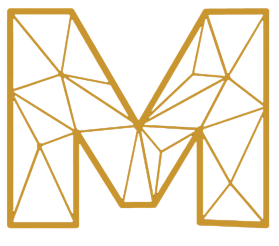Introduction
Knee osteoarthritis is a widespread condition that leads to pain, stiffness, and difficulty with daily activities. One of the most effective ways to manage osteoarthritis symptoms is by strengthening the muscles that support the knee —especially the quadriceps (front thigh) and the gluteal muscles (hip area). These muscles play a vital role in stabilizing the knee and reducing strain on the joint.
Recent advances in technology, like the MAI Motion system, are helping clinicians assess knee movement more precisely and conveniently. This marker-less motion capture tool, paired with proven strength-training techniques such as closed-chain exercises and custom-tailored workout plans, is transforming the way knee osteoarthritis is managed. Together, these innovations are making knee rehabilitation smarter, more targeted, and more accessible than ever.
What Are Closed-Chain Exercises and Dose–Response Training?
It’s helpful to understand a couple of key concepts. Closed-chain exercises are movements where your feet stay planted on the ground or another surface—think of squats or step-ups. These exercises involve multiple joints and muscle groups working in harmony, closely mimicking the motions you use in daily life, like standing, walking, and getting up from a chair. This approach differs from open-chain exercises , where your limbs move freely, such as while doing leg extensions.
Dose–response training is about finding the sweet spot between exercise intensity and results. By carefully adjusting the frequency, difficulty, and volume of workouts, clinicians help patients get the most muscle-strengthening benefit while lowering the risk of injury. Combining closed-chain exercises with a dose–response approach leads to more effective and personalized rehabilitation plans.
Why Is Muscle Strength So Important for Knee Osteoarthritis?
Strong quadriceps and gluteal muscles are essential for supporting and stabilizing the knee joint . When these muscles are weak, the knee has to bear more load, making it less steady and more prone to pain and injury.
Closed-chain exercises are particularly effective because they get all the key muscle groups working together, just like in real-world movements. Research has shown that building strength in these areas improves knee function , reduces discomfort, and can even slow the progression of osteoarthritis. This makes muscle strengthening a cornerstone of managing knee osteoarthritis without surgery.
How MAI Motion Technology Is Changing Knee Assessment
The MAI Motion system brings a new level of convenience and precision to motion analysis . Unlike traditional lab setups that use sticky markers and specialized equipment, MAI Motion uses a camera to capture how your body moves during simple activities—like standing up from a chair. It then analyzes this movement data in three dimensions.
What makes this technology stand out is its ability to provide detailed insight using just a standard video camera—no special suits or preparation needed. For both patients and clinicians, this makes knee assessment faster, simpler, and less intrusive. The information gained helps pinpoint which muscles need strengthening or which movements could be improved, allowing for exercise plans tailored to each individual’s needs.
Personalizing Strength Training with MAI Motion Data
Because MAI Motion gives such precise data, physiotherapists and trainers can craft exercise programs that target your unique strengths and weaknesses. Focusing on closed-chain exercises for the quadriceps and glutes, the workouts can be adjusted in intensity and frequency based on your real movement patterns—not just general guidelines.
This personalized approach leads to more effective progress and keeps motivation high, as each exercise plan is challenging yet achievable. Over time, patients can track improvements not just in muscle strength but also in how they move day-to-day, making long-term commitment to rehabilitation more rewarding.
Looking Ahead: The Future of Knee Osteoarthritis Care
The future for knee osteoarthritis management is bright, thanks to advancements like MAI Motion. Soon, we may see even smarter feedback systems that offer real-time guidance and automatically adjust exercises as patients improve. With integration into mobile apps and wearable devices, tracking progress and maintaining a rehab routine at home will become even easier and more convenient.
As these tools become more available, they’ll help healthcare professionals and patients alike rethink how knee osteoarthritis is managed—making care more personalized and effective, and ultimately leading to better outcomes and a higher quality of life.
Conclusion
The combination of closed-chain strength training and new tools like MAI Motion technology is opening up exciting new possibilities for people with knee osteoarthritis. By harnessing personalized, data-driven exercise plans focused on building key muscle strength , patients can experience less pain, improved knee stability , and a more active and comfortable life.
If you or someone you care about is living with knee osteoarthritis , talk to a healthcare professional about these innovative strategies. Adopting evidence-based approaches today can pave the way for stronger, healthier knees in the future.
References
Wen, Y., Verma, T., Whitehead, J. P., & Lee, P. (2025). Empirical Validation of a Streamlined Three-Repetition Sit-to-Stand Protocol Using MAI Motion. Applied Sciences, 15(10). https://doi.org/10.3390/app15105688
Armstrong, K., Zhang, L., Wen, Y., Willmott, A. P., Lee, P., & Ye, X. (2024). A marker-less human motion analysis system for motion-based biomarker identification and quantification in knee disorders. Frontiers in Digital Health. https://doi.org/10.3389/fdgth.2024.1324511
Armstrong, K., Wen, Y., Zhang, L., Ye, X., & Lee, P. (2022). Novel Clinical Applications of Marker-less Motion Capture as a Low-cost Human Motion Analysis Method in the Detection and Treatment of Knee Osteoarthritis. Journal of Arthritis, 11, Article 053. https://doi.org/10.4172/2167-7921.2022.11.053

